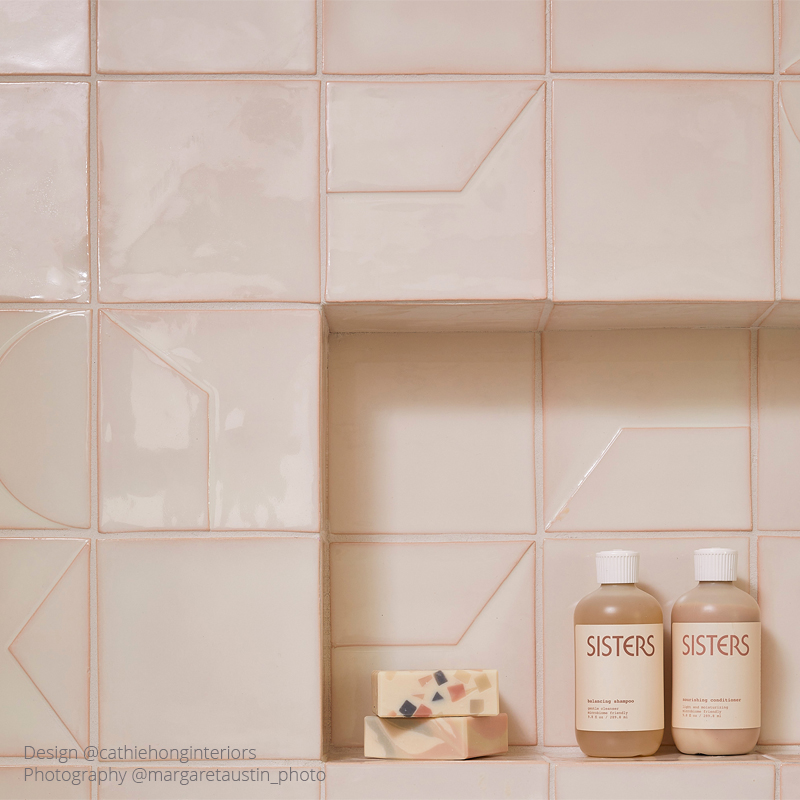All about grout
1. Do I need to use grout?
2. What sort of grout should I use?
3. When do I use cement-based grout?
4. When should I use epoxy and urethane grout?
5. Which colour should I use?
6. Can I do it myself?
7. Which brand of grout do you recommend?

1. Do I need to use grout?

Yes, you do need to use grout. Why? Well, for one thing it keeps the wall behind the tiles (and the unglazed edges of the tiles) dry and so makes the surface waterproof. Grout also connects the tiles to each other, making the installation more robust and stable. One final reason is that if you don’t use grout, over time grease and dust will build up in the spaces between the tiles and it will be more-or-less impossible to clean.
Be aware that we sometimes show photos of tiles that are not grouted, like this photo here. This is because we need to reuse the tiles in other photos, not because we advocate not using grout.
2. What sort of grout should I use?
Your tile installer should advise you on this but it helps to have a bit of background knowledge. There are three main types of grout that you are likely to come across: cement-based, epoxy and urethane. Cement-based grout can be either sanded or unsanded.
3. When do I use cement-based grout?
Cement-based grout is the standard option. It is cheaper than epoxy and easier to work with. As mentioned, it comes in sanded and unsanded versions and we personally like the look of sanded grout more. The sand makes the grout more stable but many tile installers say that sanded grout is less suitable for wet areas such as backsplashes or showers. Epoxy or urethane is better for these situations. Cement grout can, however, be sealed so don’t count it out.
Sanded grout is not suitable for joints of less than 3mm (1/8 inch). In general, we recommend grout lines of 2-3mm (1/16-1/8 inch) so unsanded grout may be better. We recommend this size of joint because our ceramic tiles are handmade and so slightly less regular in size than mass-produced tiles. Grout lines of 2-3mm (1/16”-1/8 inch) give you the space to even up the grid of tiles.
4. When should I use epoxy and urethane grout?
If you’re not a professional tile installer or an experienced amateur, you shouldn’t try to use epoxy grout. It’s more expensive than cement-based grout and harder to apply, partly because it has a very short working time. It looks smoother and so can appear more artificial, but it can also come in a sanded version, bringing it closer to the look of cement grout. The advantages of epoxy grout are that it is water and stain-resistant and very durable so it is good for showers and backsplashes.
Urethane grout is easier to use than epoxy and is also water and stain resistant. It comes pre-mixed and is very flexible but it doesn’t have the sanded, textural look of cement-based grout.
5. Which colour should I use?

Our general advice is to choose a shade of grout that is slightly darker than the base glaze of the tile. For our screen printed tiles the base glazes are PPWM soft white or PPM6 cream. The second colour from top here is 132 in the Mapei range and this shade of grout, in our opinion, works well with PPWM soft white. If you intend to use a strong grout colour, be sure to wax or oil the tiles first to stop the grout discolouring any (harmless) hairline cracks that may be present in the glaze.
6. Can I do it myself?
If you’re good at this kind of thing, it’s possible to do it yourself with cement-based grout, but we recommend getting a tile installer to do it for you. What is more, we recommend a tile installer that is experienced with handmade tiles. It is more difficult than installing mass-produced tiles. If you choose to do it yourself, watch a lot of YouTube videos first and remember some golden rules: 1. Allow the wall surface beneath the tiles and the tile cement to dry thoroughly before grouting. 2. Mix the grout, wait two minutes, then mix again. 3. Don’t use too much water when washing off the excess grout.
7. Which brand of grout do you recommend?
Your tile installer may have a brand they always use so talk to them first. When asked for a brand, we often recommend Mapei because they have a good colour range and someone from Mapei once came to visit us with grout samples and he was very nice. However we don’t get commission from them or anything and other brands are, we’re sure, also good.


